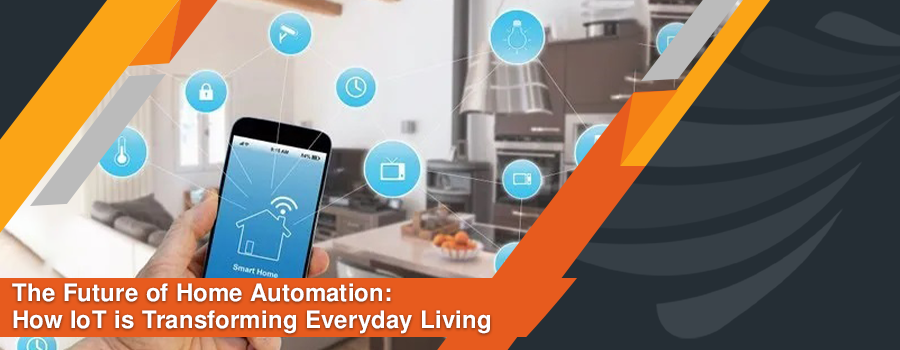Home Automation and the Future of Insured Interiors delves into the realm of smart technology within homes, exploring how it not only boosts security measures but also shapes the future of insurance coverage. As we embark on this journey, the intricate interplay between automation and insurance unveils a landscape filled with possibilities and innovations.
The subsequent paragraphs will delve deeper into the significance of home automation, the integration of smart technology, data privacy concerns, and future trends that are destined to transform insured interiors.
Importance of Home Automation in Insured Interiors
Home automation plays a crucial role in enhancing security measures within insured interiors, ultimately reducing potential risks and damages for insurance purposes.
Enhanced Security Measures
Integrating smart devices such as smart locks, security cameras, and motion sensors can significantly improve the security of insured interiors. These devices provide real-time monitoring and alerts, deterring potential intruders and preventing unauthorized access.
Preventing Risks and Damages
Home automation systems can detect and respond to threats like fire, water leaks, or extreme temperature changes promptly. For instance, smart smoke detectors can automatically alert emergency services, minimizing damages and reducing insurance claims.
Smart Devices in Insurance Policies
- Smart thermostats: Monitoring temperature changes to prevent frozen pipes.
- Water leak detectors: Alerting homeowners of leaks to prevent water damage.
- Smart security systems: Providing evidence in case of break-ins and enhancing overall security.
Cost Savings on Insurance Premiums
Insurance providers often offer discounts for homeowners who implement home automation systems due to the decreased likelihood of claims. By investing in smart devices, homeowners can enjoy cost savings on insurance premiums over time.
Integration of Smart Technology in Insured Interiors

Smart technology has revolutionized the way we interact with our homes, providing convenience, security, and efficiency. When it comes to insured interiors, the integration of smart devices plays a crucial role in monitoring and preventing potential hazards. Let's delve into the different aspects of how smart technology is integrated into insured interiors.
Types of Smart Devices in Home Automation
Smart devices commonly used in home automation include smart thermostats, security cameras, smart locks, smart lighting, smart smoke detectors, and smart water leak detectors. These devices are designed to communicate with each other seamlessly, creating a network that can be controlled and monitored remotely through a smartphone or a central hub.
Communication between Smart Devices
Smart devices in a home automation system communicate through protocols like Wi-Fi, Bluetooth, Zigbee, or Z-Wave. These protocols enable the devices to send and receive information, triggering actions based on predetermined settings. For example, a smart smoke detector can communicate with smart lighting to turn on all lights in the house in case of a fire emergency.
Detection and Prevention of Hazards
Smart technology can detect potential hazards such as fires or water leaks in real-time, providing homeowners with immediate alerts on their smartphones. For instance, a smart water leak detector placed near a water heater can detect leaks and automatically shut off the water supply to prevent flooding.
Similarly, smart smoke detectors can send alerts to homeowners and authorities in case of a fire, potentially saving lives and minimizing property damage.
Insurers' Evaluation of Smart Technology Integration
Insurers are increasingly recognizing the value of smart technology in preventing and mitigating risks in homes. By incentivizing homeowners to install smart devices, insurers can offer discounts on insurance premiums as these devices reduce the likelihood of claims related to fire, water damage, or theft.
Insurers may also partner with smart device manufacturers to offer bundled packages that enhance home security and safety, ultimately leading to a win-win situation for both homeowners and insurers.
Data Privacy and Security Concerns in Home Automation

As home automation becomes more prevalent in insured interiors, the protection of personal data collected by smart devices is of paramount importance
Securing Personal Data
- Enable two-factor authentication on all smart devices to add an extra layer of security.
- Regularly update firmware and software to patch any vulnerabilities that could be exploited by hackers.
- Use strong, unique passwords for each smart device to prevent unauthorized access.
Risks of Data Breaches
- Data breaches in a home automation system can lead to identity theft, unauthorized access to sensitive information, and even physical security risks.
- Criminals could exploit vulnerabilities in smart devices to gather personal data and misuse it for fraudulent activities.
- Unauthorized access to security cameras or smart locks can compromise the safety and privacy of homeowners.
Best Practices for Insurers
- Implement data encryption protocols to protect sensitive information transmitted between smart devices and servers.
- Regularly conduct security audits to identify and address any potential vulnerabilities in the home automation system.
- Educate homeowners on the importance of data privacy and security, providing resources and guidelines for securing their smart devices.
Future Trends in Home Automation and Insurance
The future of home automation and insurance is poised to be shaped by emerging technologies that are set to revolutionize how we interact with our living spaces and protect our assets. As advancements in artificial intelligence, machine learning, and the Internet of Things (IoT) continue to progress, we can expect significant changes in how insurers and homeowners approach home automation.
Advancements in Artificial Intelligence and Machine Learning
Artificial intelligence (AI) and machine learning are expected to play a crucial role in the future of home insurance. These technologies will enable insurers to analyze vast amounts of data to assess risk more accurately and tailor insurance policies to individual homeowners.
AI-powered chatbots may also provide instant assistance and claims processing, enhancing customer service and efficiency.
The Impact of the Internet of Things (IoT)
The IoT will undoubtedly shape the future of insured interiors by connecting devices and systems within homes to the internet. This interconnected network will allow for seamless communication between smart home devices, enabling homeowners to monitor and control their homes remotely.
From security cameras to smart thermostats, IoT devices will enhance safety, energy efficiency, and convenience within insured interiors.
Evolving Home Automation to Meet Changing Needs
As the needs of insurers and homeowners evolve, home automation systems will adapt to meet these changing demands. Predictive analytics may be used to anticipate potential risks and prevent damage before it occurs, reducing insurance claims and premiums. Additionally, personalized smart home solutions tailored to individual lifestyles and preferences will become more prevalent, enhancing the overall homeowner experience.
Ending Remarks

As we conclude our exploration of Home Automation and the Future of Insured Interiors, it becomes evident that the synergy between technology and insurance heralds a new era of protection and convenience for homeowners. The dynamic evolution of smart devices and insurance coverage promises a future where safety and efficiency seamlessly coexist within our living spaces.
FAQ Section
How can home automation lead to cost savings on insurance premiums?
Home automation enhances security measures, reducing the likelihood of damages or risks, which can result in lower insurance premiums due to decreased potential for claims.
What are some examples of smart devices that can be integrated into home insurance policies?
Smart devices like smart locks, security cameras, water leak detectors, and smoke detectors are commonly integrated into home insurance policies to enhance security and mitigate risks.
How do smart devices communicate with each other in a home automation system?
Smart devices communicate through wireless protocols like Wi-Fi, Zigbee, or Z-Wave, enabling them to exchange information and work together to create a seamless automated system.



